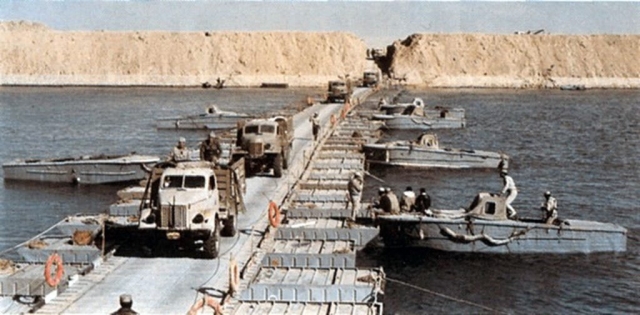On the 29th of October, 1973, after arriving at a strategic point in Egypt just 101 kilometers away from Cairo as part of the Yom Kippur war, the Israel Defense Forces began negotiating with the enemy. The Yom Kippur war began on October 6th with the sudden attack of Egypt and Syria. Despite the Israeli public’s feeling of being crushed during the 1973 war, it only took a few weeks for Israeli forces to reach a point of having the upper hand.
The Egyptian front during the war was extremely tough and resulted in thousands of casualties on both ends. During the first few days of the sudden operation, many Israeli officials were concerned for the very sovereignty of Israel and its entire existence. Egyptian troops made huge gains in the Israeli-occupied Sinai desert and at some point seemed unstoppable. It was only after a few days of nonstop security cabinet meetings that led to the drafting of most IDF reservists that helped tip the war in Israel’s favor.
Today marks 49 years since the start of the Yom Kippur war, in which 8 Arab countries supported by the Soviet Union launched a surprise attack against Israel and were totally crushed, losing over 2000 km2, and ending with the IDF 30 km from Damascus and 100 km from Cairo.
— Uri Kurlianchik (@VerminusM) October 6, 2022
While the IDF relied on infantry combined with artillery in the northern front against Syria, the Egyptian front was all about tanks. It is considered to this day the largest and last major tank-on-tank battle to take place, after WW2 of course. The Israelis in the early 70s were in the midst of developing their own tank but were not quite there yet. American Paton tanks along with British Centurion tanks were what the IDF had in stock at the time.
It was only after October 15th that IDF forces predominantly led by the Armored Corp began achieving significant milestones that would lead to a ceasefire. After the infantry-led takeover of Suez, a city on the banks of the Suez Canal, IDF forces gained full control of Sinai and the canal.
Yom Kippur War:
— ZionistCommand (@ZionistCommand) October 6, 2021
The Arabs claim a "victory" that ended in #Israel repelling the attack, crossing the Suez canal, threatening Cairo and taking prisoner 30k Egyptians.
Ok - they won ... pic.twitter.com/di5o182UXO
Israel solidified its position with the help of multiple airstrikes that targeted Egyptian supply chains. After practically completely wiping out any enemy resistance, the IDF with the Israeli government’s approval began to negotiate on matters of prisoner swaps and territorial exchanges. Israeli forces were less than half a day’s drive away from Cairo with no military ahead of them.
Some IDF soldiers were frustrated with the sudden halt in movement despite no resistance but were reminded by their commanders of their objective of protecting Israel and nothing more.
TODAY IN JEWISH HISTORY
— Yaakov Ytzchak (@yaakovyitzcha) October 30, 2022
5 CHESHVAN
In 1975, Israel signed the Sinai disengagement pact with Egypt. The agreement called for Israel to withdraw from the Sinai passes captured in the 1973 Yom Kippur War, leaving them as a demilitarized zone monitored by American and UN observers. pic.twitter.com/GwNc1irqVh
The beginning of negotiations on October 29th symbolizes the broader Israeli-Egyptian talks that would lead to the eventual peace agreement signed in 1979. Nevertheless, the Yom Kippur war came at a great cost to the IDF and the traumatized Israeli public, who were sure all was doomed up until the ceasefire was announced.


